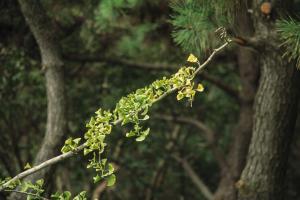What are the green worms that eat tomato plants?
Tomatoes are a popular vegetable crop that is loved by many due to their juicy, sweet and tangy flavors. However, they are prone to various pests and diseases, which can cause significant crop losses if not controlled. One of the most dreaded pests that attack tomato plants are the green worms that feed on the leaves, stems, and fruits.
Identification
The green worms that eat tomato plants are known as tomato hornworms. They belong to the family Sphingidae, and their scientific name is Manduca quinquemaculata. They are commonly found in the United States and Canada but can also be found in parts of Central America. These caterpillars are easily identified by their striking green color, which blends well with the tomato plants' foliage. The adult moths are also large and attractive, with a wingspan of up to 5 inches.
Lifecycle
The tomato hornworms undergo a complete metamorphosis, which includes four stages: egg, larva, pupa, and adult. The adult moths lay their eggs on the underside of tomato leaves, where they hatch into tiny caterpillars that grow rapidly by feeding on the tomato plant's foliage. After about two weeks, the larvae are fully grown and ready to pupate. They then burrow into the soil, where they transform into pupae and eventually emerge as adult moths after two to three weeks.
Damage
The green worms that eat tomato plants cause significant damage by feeding on the leaves, stems, and fruit, leading to stunted growth, reduced yields, and even complete plant death. They can consume many leaves within a short time, and if not controlled early enough, they can cause severe economic losses to tomato growers. Another tell-tale sign of their presence is the presence of black droppings on the plant's leaves and soil.
Control
There are several ways to control the green worms that eat tomato plants. Some of these include:
Handpicking: Tomato hornworms are usually large, making them easy to spot and handpick off the tomato plants. This method is effective for small-scale gardeners.
Bacillus thuringiensis: This is a naturally occurring soil bacterium that produces a protein that is toxic to the caterpillars. It is safe to use and can be applied as a spray to the tomato plants' leaves.
Insecticides: There are several insecticides available that can be used to control tomato hornworms, but they should be used with caution as they can harm beneficial insects like bees and ladybugs.
Conclusion
Green worms that eat tomato plants are tomato hornworms, which belong to the family Sphingidae and are easily identified by their bright green color. They cause significant damage to tomato plants by feeding on the leaves, stems, and fruit, leading to a reduction in yield, stunted growth, and plant death. However, several control measures can be used to manage their populations, including handpicking, the use of Bacillus thuringiensis, and insecticides. With proper management, tomato growers can keep their plants healthy and ensure a bountiful harvest.

 how many times do yo...
how many times do yo... how many planted tre...
how many planted tre... how many pine trees ...
how many pine trees ... how many pecan trees...
how many pecan trees... how many plants comp...
how many plants comp... how many plants can ...
how many plants can ... how many plants and ...
how many plants and ... how many pepper plan...
how many pepper plan...

































